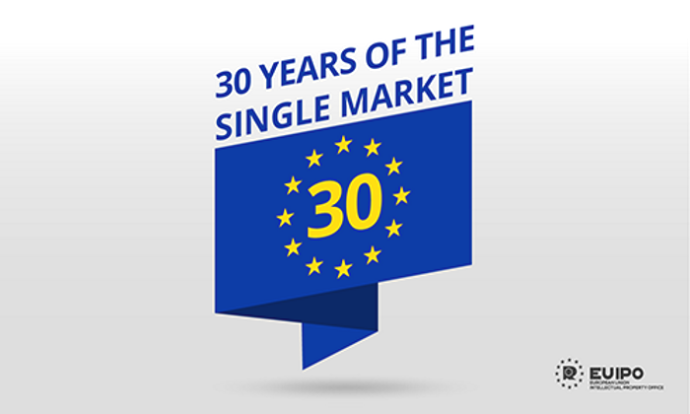
In the 30th anniversary of the Single Market, it is however important to remember that it wasn’t always like this. Before the Single Market, businesses, designers and innovators had to deal with a fractured and disparate IP system in Europe with little certainty that their IP right that was registered in one Member State would be accepted in another.
A look back
The Single Market was established on 1 January 1993 following the signing of the Single Act in 1987 and the Maastricht Treaty on 7 February 1992. It successfully removed barriers to the movement of goods, services, labour, and capital, whilst offering countless opportunities for millions of businesses and consumers in Europe. The importance of intellectual property to this process was already clear when the idea of a single market was being formulated. A 1985 white paper, “Completing the internal market” stated that differences in intellectual property laws had a direct and negative impact on intra-Community trade and “on the ability of enterprises to treat the common market as a single environment for their economic activities.”
The paper highlighted the first necessary step to reach a decision on a Community trade mark and on a proposal to converge national trade mark laws. The white paper envisioned considerable advantages coming from these proposals: new markets would open to European businesses by making it possible for them to obtain, with a single application, one trade mark covering all the Member States. A necessary part of this process: a proposal by the European Commission on the establishment of a new ‘Community trade marks Office’.
European businesses would still have to wait a few years to see the proposal materialise. However, a year after the establishment of the Single Market, the EUIPO was born in Alicante, Spain, in 1994. Our name was, back then, the Office for Harmonisation in the Internal Market.
The EUIPO – a Single Market success story
The Single Market is exemplified in the story of the EUIPO and the numerous advantages its establishment has brought to EU businesses. By ensuring that creators and owners of intellectual property (such as trade marks, designs and patents) are able to protect and profit from their creations across the EU, the intellectual property system has played an important role in creating the Single Market. The EUIPO, the EU trade mark (EUTM) and the RCD (Registered Community Design) are prime examples of this success; fulfilling the original vision of eliminating barriers for businesses by allowing them to register their intellectual property across the EU with one application. Today, we register around 150 000 trade marks and more than 80 000 design s every year.
Furthermore, the increasing harmonisation of national IP laws reduces confusion, increases certainty and makes it easier for businesses to thrive in the EU. The EUIPO has been integral to this harmonisation process, helping to create a level playing field for businesses operating in the Single Market, encouraging innovation and adding IP value for business and citizens in Europe and beyond.
These efforts were highlighted in the newly released 2023 Annual Single Market Report. In it, the European Commission highlights intellectual property rights as one of the key enablers of a well-functioning Single Market and praises the role of the EUIPO in protecting intellectual property during its 30 years of existence.Currently, a broad effort to establish the unitary patent system, intended to start on 1 June 2023, will further strengthen the Single Market by providing a new tool for European innovators to protect their intellectual property. With uniform protection across all participating countries, it will provide a huge cost advantage to innovators and reduce administrative burdens. While the EUIPO is not directly involved in the making of the unitary patent system, it shows the continuous need there is to further harmonise IP laws across the EU.
Read the full article here.
